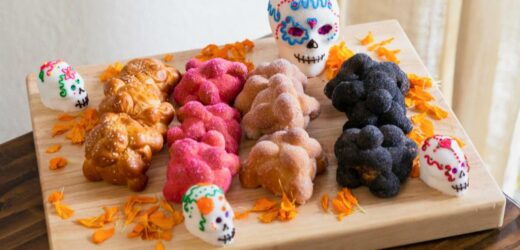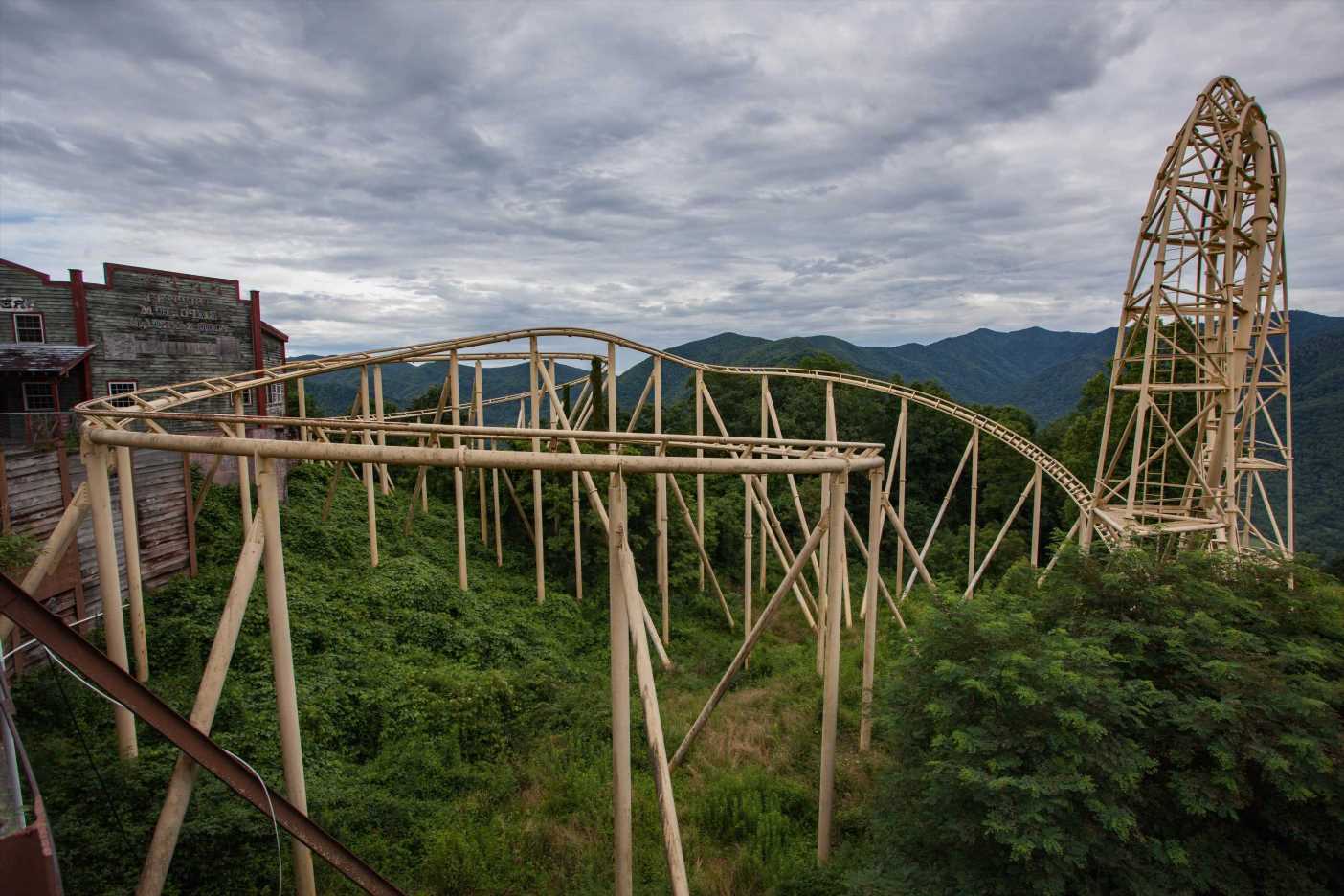HOMESTEAD, Fla. — Over the past week, Elizabeth Hernández has turned La Patrona Bakery into a frenetic pan de muerto operation, making dozens of round loaves topped with bony fingers.
This bread of the dead — similar in texture to challah and sprinkled with sugar or sesame seeds — is a staple of the Mexican holiday Día de los Muertos, or the Day of the Dead. The celebration on Nov. 1-2 aims to reunite the souls of the dead with the living.
“It’s a symbol of their death, but at the same time, life,” Hernández said in Spanish of the bakery’s bread, which uses a recipe from Mexico City.
People eat the bread with their families, but it is also an essential offering on home altars, or ofrendas. The sweet-smelling bread sits alongside photos of the dead, and an array of their favorite foods and drinks, attracting and nourishing the souls who visit, said Michelle Téllez, a professor of Mexican American Studies at the University of Arizona.
By the time the holiday is over, the food usually doesn’t have any smell or flavor because the dead have presumably eaten it, said Antonieta Mercado, a professor at the University of San Diego who has written about the history and significance of Día de los Muertos.
Beyond the Mexican diaspora, the holiday has found broader appeal in popular culture. The popularity of films like the 2017 Disney Pixar feature “Coco,” which is set during Día de los Muertos, underscores the significance of the holiday and gets people to ask questions about the celebration, Mercado said, but it also comes with the risk that the cultural meaning may be lost.
While scholars generally agree that it originated with Mexico’s Indigenous people, they debate how the living initially memorialized the dead. Some scholars, like Téllez, believe it was a celebration tied to the changing seasons. Others, like Mercado, associate it with the growing cycle of corn, when people asked the souls of the dead and the forces of nature to bring a good harvest.
After Spaniards began to convert Indigenous people to Christianity, the Indigenous celebration absorbed traditions from the Catholic All Saints’ Day (Nov. 1) and All Souls’ Day (Nov. 2).
“It’s beautiful because you honor your ancestors,” Mercado said. “For a lot of Latinx and Indigenous communities, their ancestors are a part of the community. They never leave, they just translate to another plane.”
In 16th-century Mexico, Spaniards celebrated All Saints’ Day and All Souls’ Day with cemetery vigils, laying out flowers, candles and bread, said Stanley Brandes, a professor at the University of California, Berkeley, who has researched Día de los Muertos. Pan de muerto owes its sweetness to the sugar brought to Mexico by the Spanish.
There are dozens of different types of pan de muerto, with bakers offering their own interpretations, based on where they live and where they’re from.
While Hernández of La Patrona Bakery uses anise seeds, Jaime Reynoso Pérez, an owner and baker at La Migaja Mexican Bakery inside the Mi Rinconcito Mexicano restaurant in Miami, uses orange blossom. His bread is also round, representing the circle of life. It pays tribute to the dead with pieces shaped like bones and a small circle in the middle to represent the skull. The bread, a recipe Reynoso Pérez said is like a hamburger bun and a concha combined, is covered in white sugar and tastes like a flower.
Reynoso Pérez, who is from Veracruz in Mexico, also makes another bread with sesame seeds and caritas, or little faces, he imports from Oaxaca. The caritas, sometimes representing the visage of an angel or the Virgin Mary, are made with dried pieces of dough that are decorated with vegetable paint. He places them in the center of another variety of pan de muerto.
“When it’s your time to make it, you personalize it to the way you want to do it,” Reynoso Pérez said in Spanish. He is preparing to sell about 800 loaves of bread for the holiday. “I try to be more classic and stick to the original because that’s the flavor you look for when you’re away from home to take you back. It brings back a lot of memories.”
Pan de Muerto
Total time: 2 hours, plus 1 hour for rising
Yield: Three 7-inch rounds
You’ll find this pan de muerto, or bread of the dead, at the center of the elaborate Day of the Dead altar festooned with sugared skulls, flowers and other mementos of the family’s departed.
Ingredients
- 560 grams (4 cups) all-purpose flour, plus more as needed
- 100 grams (1/2 cup) plus 2 tablespoons sugar
- 1 1/2 teaspoons salt
- 29 grams (1 ounce) fresh cake yeast (available in some supermarkets and specialty food markets)
- 4 large eggs
- 1/2 cup plus 2 tablespoons lard, softened, plus additional as needed
- 1 cup whole milk
- 1 large egg white (optional)
- 1 tablespoon sesame seeds (optional)
- 1 tablespoon melted shortening (optional)
- 1 tablespoon sugar or cinnamon-sugar (optional)
Preparation
1. Mound 560 grams of flour in a large mixing bowl. Sprinkle with 1/2 cup of the sugar and salt. Add yeast, breaking it up with your fingertips. Mix lightly.
2. Make a well in the center of the flour mixture. In the well, add eggs and 1/2 cup of the lard. With your fingers or a wooden spoon, slowly draw flour into eggs and shortening until they’re mixed into the flour. Gradually add the milk. The dough will be messy and very sticky.
3. Flour a work surface heavily, and have more flour ready to use. Turn dough onto the surface and begin to knead aggressively, sprinkling with flour liberally until dough is soft, smooth and supple, and rebounds after a touch. Divide into four equal pieces and form into smooth rounds. Allow to rest in a warm spot for 20 minutes. Meanwhile, grease a large baking sheet with lard.
4. Once they have rested, gently flatten three of the four pieces into 6-inch rounds, patting them around the edges so they retain a slight dome in the middle. Place them on the baking sheet several inches apart; if necessary, use more than one sheet. To the fourth piece, add remaining 2 tablespoons lard, 2 tablespoons sugar, and 2 tablespoons flour, kneading until well incorporated. This is for decorating the rounds with the traditional skull and crossbones; it will be supple but stiffer than the bread dough.
5. To make the crossbones decorations, divide the decorating dough into three equal sections. From one section, break off a ball about 1 inch in diameter and set aside. Divide the remaining part of that section into two, rolling each into a rope a few inches long, with some parts of the rope fatter than the others. (Do this by gently rolling the dough with your hand outstretched, with only the three middle fingers touching the dough, so that the dough between your fingers is puffier than the rest.) Cross the two “bones” in an “X” across a round of bread, and place the small ball of dough in the center. Repeat with remaining dough. Set the breads aside to rise for one hour. Meanwhile, heat the oven to 350 degrees.
6. The bread may be baked plain, or gently brushed with egg white and sprinkled with sesame seeds. Bake until browned and fragrant, about 45 minutes, or until it produces a hollow sound when tapped on the bottom. If baked plain, it may be brushed afterward with melted lard and dusted with sugar or cinnamon sugar. Serve warm or at room temperature.
This article originally appeared in The New York Times.
Subscribe to our weekly newsletter, In The Know, to get entertainment news sent straight to your inbox.
Source: Read Full Article



